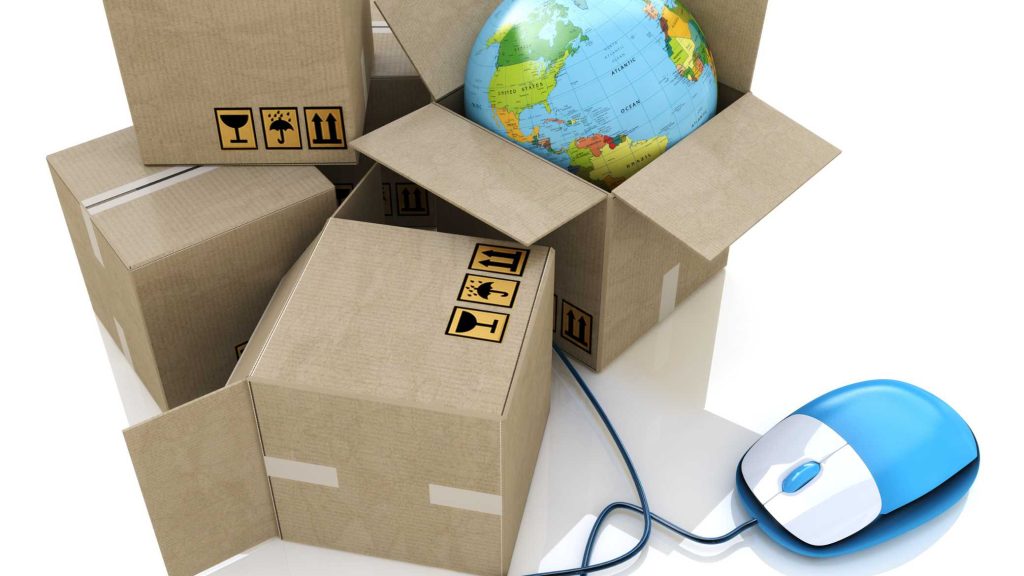Cross-Border Ecommerce: How to Sell Globally – Comprehensive Guide 2025
Cross-Border Ecommerce : In an increasingly interconnected digital economy, cross-border ecommerce has evolved from being an ambitious expansion tactic to a necessity for scaling online businesses. By 2025, millions of brands—big and small—are capitalizing on the opportunity to sell globally, tapping into new consumer markets across continents.
Table of Contents
This comprehensive guide will walk you through every crucial detail of expanding your online business internationally, highlighting key strategies, high-impact tools, global shipping solutions, payment methods, compliance challenges, and how to localize your store for better conversion.
What is Cross-Border Ecommerce in 2025?

Cross-border ecommerce refers to the buying and selling of products or services through online platforms across international borders. This involves either B2C (business to consumer), B2B (business to business), or C2C (consumer to consumer) transactions.
With platforms like Amazon Global, eBay International, AliExpress, Etsy, Shopify, and others, global ecommerce is now accessible to almost any entrepreneur with a connected device.
Also Read : Start a Fashion Store Online
According to Statista, cross-border ecommerce sales are expected to exceed $5 trillion globally by 2025, making it one of the most profitable ecommerce segments for emerging brands.
Why Cross-Border Ecommerce Is a Must in 2025
1. Access to New Markets
Selling globally enables your brand to reach billions of potential customers, especially in underserved or fast-growing ecommerce markets like Southeast Asia, Latin America, Africa, and the Middle East.
2. Reduced Dependency on Domestic Sales
If your local market is saturated or experiencing an economic slowdown, expanding internationally helps stabilize and diversify revenue streams.
3. Increased Revenue Potential
Certain products may have higher perceived value abroad, allowing for better margins and faster inventory turnover.
4. Improved Brand Authority
Having a global presence significantly boosts brand credibility, allowing you to become a recognized name beyond your domestic boundaries.
Best-Selling Cross-Border Products in 2025
- Fashion & apparel
- Beauty & skincare
- Electronics & gadgets
- Baby products
- Home decor & furniture
- Health & wellness products
- Niche digital goods (eBooks, templates)
- Sustainable and eco-friendly products
Top Platforms for Cross-Border Ecommerce
1. Amazon Global Selling
- Huge international customer base
- Robust logistics (FBA)
- Localized store interface
2. Shopify
- Fully customizable global ecommerce store
- Language and currency localization
- Integration with DHL, FedEx, UPS, etc.
3. eBay International
- Trusted resale and B2C platform
- Shipping support via eBay Global Shipping Program
4. AliExpress
- Chinese sellers dominate, but international sellers gaining ground
- Great for B2C and dropshipping
5. Etsy
- Perfect for handmade, vintage, and niche products
- Loyal buyer base in Europe, USA, and Australia
How to Start a Cross-Border Ecommerce Business
Step 1: Identify Global Demand and Choose Target Countries
Research which countries have demand for your product using:
- G Trends
- SEMrush / Ahrefs
- Statista market data
- FB Audience Insights
- Shopify Market Insights Tool
Look for:
- High online shopping penetration
- Low import duties on your category
- Local competitors and pricing
Step 2: Localize Your Ecommerce Store
Localization is the key to conversion in cross-border ecommerce.
What to localize:
- Language: Use local dialects, idioms, or translation plugins like Weglot or Langify.
- Currency: Offer local currency pricing using geolocation tools.
- Measurements: Adjust product dimensions, weight, or sizing charts.
- Payment Options: Integrate local payment gateways (like Klarna in EU, Razorpay in India, PayU in Latin America).
- Customer Support: Offer multilingual support or automated translation chatbots.
Step 3: Set Up International Shipping and Logistics
Efficient, affordable, and reliable shipping is crucial.
Global Shipping Partners in 2025:
- DHL Express
- FedEx International
- UPS Global
- Aramex
- India Post International (budget option)
- Local third-party logistics (3PL) in target regions
Tips:
- Display estimated delivery times by region.
- Be transparent with shipping costs and import duties.
- Use real-time tracking integrations.
- Offer free international shipping above a certain order value to boost conversions.
Step 4: Understand Tax and Legal Requirements
Each country has different import laws, taxes, and product regulations.
Key Legal Areas to Address:
- Import duties and VAT (Value Added Tax)
- Country-specific product labeling requirements
- CE or FDA certifications (for certain categories)
- Data protection (GDPR in Europe)
- Local consumer protection laws
Use services like Avalara, TaxJar, or consult an international ecommerce lawyer to stay compliant.
Step 5: Offer Secure and Localized Payment Methods
High cart abandonment in global ecommerce is often due to limited payment options.
Best Global Payment Gateways 2025:
- PayPal
- Stripe
- Razorpay (India)
- Klarna (Europe)
- Apple Pay / G Pay
- Payoneer
- Wise Business (for international payouts)
Always provide multiple trusted payment options based on the shopper’s location.
Step 6: International Marketing Strategy
Marketing must adapt culturally to resonate with global customers.
Top Strategies:
- Geo-targeted ads on FB, Insta, TikTok
- Local influencer marketing
- Create country-specific landing pages
- Multi-language SEO (use hreflang tags)
- Run WhatsApp campaigns in markets like India, UAE, and Brazil
High-Reaching Keywords Examples:
- “Buy [Product Name] online in UAE”
- “Affordable [Product] shipping to Australia”
- “Best international ecommerce stores 2025”
- “Global shipping [Your Brand]”
- “Trusted international online shopping site”
Challenges in Cross-Border Ecommerce (and How to Overcome Them)

1. High Shipping Costs
Solution: Partner with 3PL services or offer bundled/free shipping.
2. Returns and Refunds
Solution: Create a region-wise returns policy and consider local warehousing.
3. Language and Cultural Barriers
Solution: Use AI-powered translation tools and consult native marketers.
4. Payment Gateway Restrictions
Solution: Use globally accepted gateways or region-specific payment aggregators.
5. Compliance Complexity
Solution: Use platforms like Avalara or Quaderno for tax compliance automation.
Key Tools for Managing Cross-Border Ecommerce
- Shopify Markets: Tailor storefronts by region
- Zonos: Landed cost calculations
- Weglot / Langify: Multilingual setup
- EasyShip / Shippo: International shipping automation
- Payoneer / Wise: Manage cross-border payouts
- Sendcloud: Automate shipping and returns
- Quaderno: Global tax compliance
Future of Cross-Border Ecommerce in 2025 and Beyond
1. AI-Driven Localization
Automated translation, smart product tagging, and region-specific personalization using AI.
2. Cryptocurrency Payments
More stores will offer crypto payment options with stablecoin acceptance for faster and cheaper transactions.
3. Drone and Hyperlocal Delivery
Especially in dense or rural areas of Asia and Africa, new delivery tech will revolutionize shipping timelines.
4. Eco-Friendly Cross-Border Fulfillment
Green packaging, carbon-neutral shipping, and local warehousing will define the next era of responsible ecommerce.
5. One-Click Global Checkout
Solutions like Shopify’s Shop Pay Global or Amazon Pay aim to make cross-border transactions as smooth as local shopping.
Success Story: Indian Brand Going Global
Case: A handmade jewelry seller in Jaipur expands to Canada and Germany via Etsy and Shopify.
- Localized Etsy product titles in German
- Used DHL Express for shipping with tracking
- Accepted payments in Euros and CAD via PayPal
- Used Instagram influencers from Toronto and Berlin for promotions
Result: 10x sales in 8 months with 40% repeat orders.
Cross-Border Ecommerce – Conclusion :

Cross-border ecommerce isn’t just a buzzword—it’s the future of online retail. In 2025, consumers are ready to buy globally, but sellers must deliver locally. To be successful, you need:
- Market research
- Cultural understanding
- Technical setup for localization
- Seamless global logistics and payments
- Tailored international marketing
Whether you’re a small-scale dropshipper or an established brand, there’s no better time than now to go global and build a brand without borders.
Buy Now : Ecommerce Website With 100 Products
Disclaimer : This guide is for informational purposes only. The rules, platforms, and strategies may vary based on industry, product category, and country. Please consult legal and financial advisors before expanding internationally.
Keywords : Cross-Border Ecommerce – Cross-Border Ecommerce 2025 – Cross-Border Ecommerce Guide



